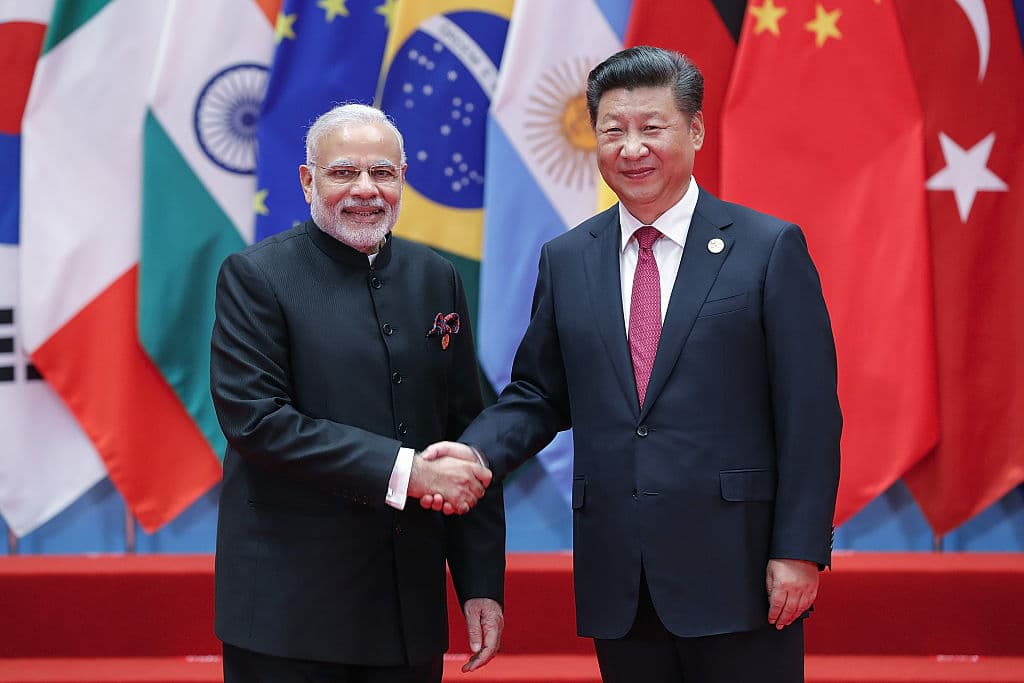China’s Cartographic Antics Signal the Logic of an Expanded Alliance With India
Feature, for starters, what is happening along the borders of Arunachal Pradesh.

Communist China’s recent renaming of 30 areas in India’s Arunachal Pradesh is the latest example of its efforts to assert territorial claims by creating facts on the ground. This marks the third such move since 2017, with 11 areas having been renamed last year. India’s foreign minister has described the Sino-Indian border, along which Arunachal Pradesh lies, as “very tense and dangerous.” Washington, meanwhile, continues to court Beijing.
Its response to China’s advances has also amounted to little more than diplomatic thoughts and prayers. The episode marks the latest example of the Biden Administration’s flawed strategy of engaging China at the expense of America’s strategic allies, like India, key to containing it. Then again, too, Washington’s recent flurry of diplomatic overtures to Beijing, much like those prior, raises doubts as to whether containment is even the aim.
China refers to Arunachal Pradesh as “Zangnan” and insists it is part of Tibet. It insists, too, that the renaming by its Ministry of Civil Affairs is “a legitimate move and China’s sovereign right” to safeguard against “place names in foreign languages that may harm China’s territorial claims.” Though outwardly farcical, Beijing’s renaming tactic is part of a broader suite of greyzone warfare tactics it deploys against India and around the world.
Last year, it renamed eight Russian cities along its border with Russia. Along its 2,100-mile-long disputed border with India, known as the Line of Actual Control, Beijing has accelerated construction of military installations and villages since the 2020 clashes. The villages are akin to the artificial islands it has erected in the South China Sea. In Tibet, and to further fortify its claims, China has resettled about 250,000 Tibetans to the villages.
Some Tibetans serve as plain-clothes border patrols alongside Chinese security and military units. Unlike the Indian army, which usually conducts its patrols a few miles short of the actual control line, Chinese forces tend to patrol up to their claimed border and within Indian territory. So India last year lost access to 26 of its 65 patrolling points, effectively ceding territory to Beijing. Few beyond New Delhi appear to have noticed.
Some 200,000 Chinese troops are deployed at the border. China’s presence also includes airbases, transport infrastructure, reinforced troop shelters, and weapons-storage facilities. India has responded in kind. Last month, it relocated 10,000 troops from its western border to its Chinese frontier in Uttarakhand and Himachal Pradesh, adding to the already 50,000-plus troops guarding the LAC. It has also increased its weapons imports.
Following last summer’s meeting between President Biden and Prime Minister Modi it seemed that a growing share of India’s weapons imports would come from America. Some have, yet not enough to suggest closer cooperation. The last substantive exchange between Messrs. Biden and Modi was at September’s G-20 Summit. Meanwhile, Washington has berated New Delhi for ostensible rights violations and ties with Russia.
Russia is no chum, yet pressuring New Delhi to pivot from Moscow misunderstands its Atmanirbhar Bharat — self-reliance — doctrine. Caravans of American dignitaries to Beijing also do little to convince India of our diplomatic loyalties. As do Washington’s overtures to Pakistan. This is worrying. First, the threat of renewed armed conflict along the Sino-Indian border cannot be discounted. Talks to cool tensions have largely failed.
After nearly five years of military build-up, with thousands of Chinese troops deployed in harsh conditions along the frontier, Mr. Xi also faces the challenge of solving the crisis without losing face. This makes negotiated settlement unlikely. Empty pronouncements of concern by Washington are also ineffective deterrents against Beijing’s expansionist aims. If tensions rise, this could destabilize Asia in ways unmanageable by America.
The threats to our national security would be great. The second consideration ties closely to the first. India is a key ally in the effort not only to contain, but prevail over, China. Last month, its navy deployed eight submarines in the Indian Ocean in a show of force against Beijing, and as part of ongoing efforts to stymie China’s aims of linking its holdings in the South China Sea with its African interests via the Indian Ocean.
There, as along the Sino-Indian border, Beijing fabricates false narratives to advance its territorial aims. India has proven willing, and increasingly able, to counter such efforts. Yet it cannot do so if it will be in a hot border war with Beijing. It also cannot do so alone. The logic is for Washington to grasp that India is a critical ally and pivot its foreign ties accordingly. A firm stance against China’s cartographic antics would be a good start.

